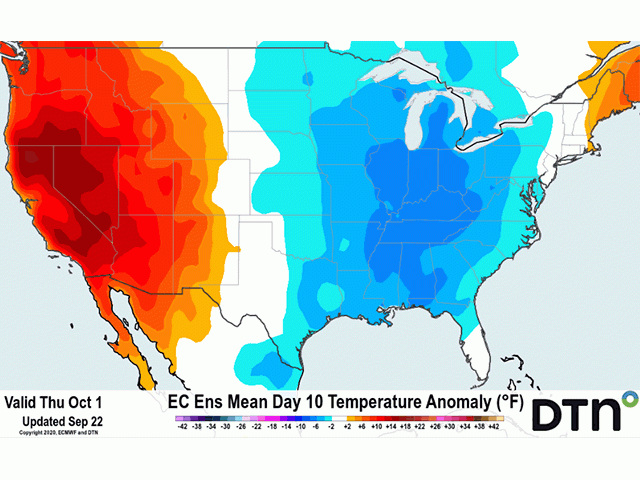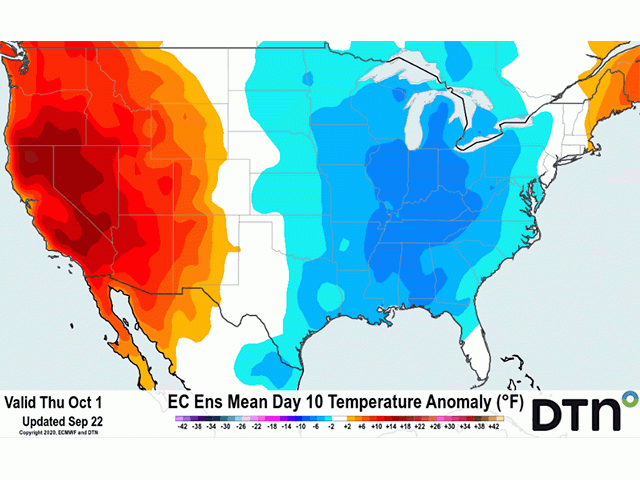Ag Weather Forum
Fall Roller-Coaster Ride
The fall season 2020 began Tuesday, Sept. 22. Two weeks after a robust cold shot gripped the Plains states, the country sits under a dome of very mild air. Mostly dry weather across the primary growing regions continues to favor row-crop harvest and winter wheat planting. Hurricane Sally did hit the Southeast U.S. last week with widespread 4-6 inches of rain and locally heavier amounts in southern Alabama and the Florida Panhandle, where up to 30 inches was reported. Crops in the affected area incurred some heavy damage.
P[L1] D[0x0] M[300x250] OOP[F] ADUNIT[] T[]
This week, Tropical Storm Beta has been slow to move into the Texas coastline. It has not been a particularly strong storm in terms of winds, but moderate to heavy rainfall will be felt along its path from Texas through the Delta and again through the Southeast. Rainfall may cause further crop damage and harvest delays to cotton. The tropical storm may bring some of its moisture northward into the Midwest as a cold front sweeps through the region, but it will be trying to outrace the front to the East Coast. A slower-moving progression will bring rain to the eastern Midwest -- favorable for winter wheat planting and germination but disruptive to row-crop harvest. A faster storm track will reduce overall rainfall amounts along the front. Models are mixed on which way to go this weekend.
Speaking of the front, the system will be the precursor to yet another pattern change. The ridge of high pressure currently dominating much of the U.S. will relocate westward this weekend and early next week, especially after a stronger system moves through in the Monday-Tuesday time frame. This will allow colder temperatures to fill into the midsection of the country east of the Rockies while well-above-normal temperatures build in the West for much of next week. More frosts and freezes will be possible across the northern tier of the country, similar in magnitude to the cold blast after Labor Day, especially in the Northern Plains and Midwest. And gusty fall winds may cause some damage or hassle to those out in the fields doing work. Strong winds could notably be a threat in drought- and derecho-affected areas of the western Midwest.
The roller-coaster ride of below-above-below-normal temperatures over the middle of the country looks to move into October as La Nina strengthens in the equatorial Pacific. Models are in good agreement that the La Nina will last through the winter. La Nina is likely to support a drier harvest pattern. In the Southern Plains, typical La Nina-enhanced dryness through the winter will be concerning for winter wheat development.
John Baranick
DTN Ag Meteorologist
© (c) Copyright 2020 DTN, LLC. All rights reserved.






Comments
To comment, please Log In or Join our Community .